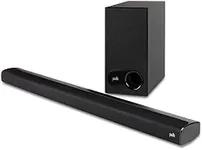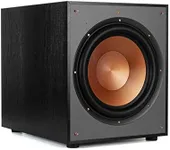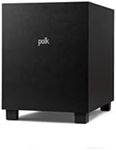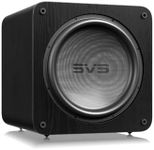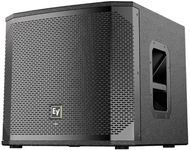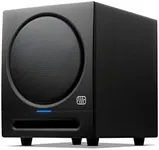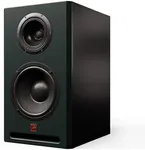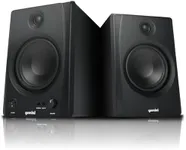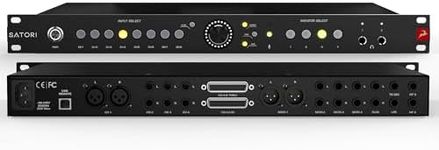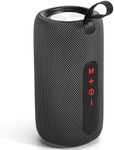Buying Guide for the Best Powered Subwoofers
Choosing the right powered subwoofer can significantly enhance your audio experience, whether you're setting up a home theater system or just want to enjoy music with deep, rich bass. A powered subwoofer has its own built-in amplifier, which makes it easier to integrate into your existing audio setup. To find the best fit for you, it's important to understand the key specifications and how they align with your needs and preferences.Power Output (Wattage)Power output, measured in watts, indicates how much power the subwoofer's built-in amplifier can deliver. This spec is important because it affects the volume and clarity of the bass. Generally, higher wattage means more powerful and impactful bass. For small to medium-sized rooms, a subwoofer with 100-300 watts is usually sufficient. For larger rooms or if you prefer very loud and deep bass, look for subwoofers with 300 watts or more. Consider your room size and how loud you like your bass when choosing the power output.
Frequency ResponseFrequency response, measured in Hertz (Hz), indicates the range of bass frequencies the subwoofer can reproduce. This spec is important because it determines how low the subwoofer can go, affecting the depth and richness of the bass. A typical range for subwoofers is 20-200 Hz. If you want to feel the deepest bass notes, look for a subwoofer with a lower end of around 20-30 Hz. For general use, a subwoofer with a range starting at 30-40 Hz should be adequate. Consider the type of content you listen to; for example, movies and electronic music often benefit from lower frequency responses.
Driver SizeThe driver size, measured in inches, refers to the diameter of the subwoofer's speaker cone. This spec is important because it affects the subwoofer's ability to move air and produce bass. Common sizes range from 8 to 15 inches. Smaller drivers (8-10 inches) are more compact and can be sufficient for smaller rooms or less bass-heavy content. Larger drivers (12-15 inches) can produce deeper and more powerful bass, making them ideal for larger rooms or for those who want a more immersive audio experience. Consider your space and how much bass impact you desire when choosing the driver size.
Enclosure TypeThe enclosure type refers to the design of the subwoofer's cabinet, which can be either sealed or ported. This spec is important because it affects the sound quality and performance of the subwoofer. Sealed enclosures provide tighter, more accurate bass, which is great for music. Ported enclosures, on the other hand, have vents that allow for louder and deeper bass, making them better suited for home theater systems. Consider whether you prioritize accuracy and tightness (sealed) or volume and depth (ported) when choosing the enclosure type.
Connectivity OptionsConnectivity options refer to the types of inputs and outputs available on the subwoofer. This spec is important because it determines how easily you can integrate the subwoofer with your existing audio system. Common options include RCA inputs, speaker-level inputs, and LFE (Low-Frequency Effects) inputs. Some subwoofers also offer wireless connectivity. Ensure that the subwoofer you choose has the appropriate connections for your receiver or amplifier. If you prefer a cleaner setup without cables, consider a subwoofer with wireless capabilities.
Adjustable CrossoverAn adjustable crossover allows you to set the frequency at which the subwoofer starts to play bass notes, blending with your main speakers. This spec is important because it helps achieve a seamless audio experience. A typical range for the crossover is 40-160 Hz. If you have small satellite speakers, you might set the crossover higher (around 80-100 Hz) to ensure they don't handle too much bass. For larger speakers, a lower crossover (40-60 Hz) might be more appropriate. Consider the size and capabilities of your main speakers when setting the crossover.
Phase ControlPhase control allows you to adjust the timing of the subwoofer's output to match your main speakers. This spec is important because it helps prevent phase cancellation, where bass waves from the subwoofer and main speakers interfere with each other, reducing bass impact. Phase control is usually adjustable in degrees (0-180°). If you notice weak or uneven bass, adjusting the phase can help improve the overall sound quality. Consider experimenting with the phase control to find the best setting for your room and speaker placement.



